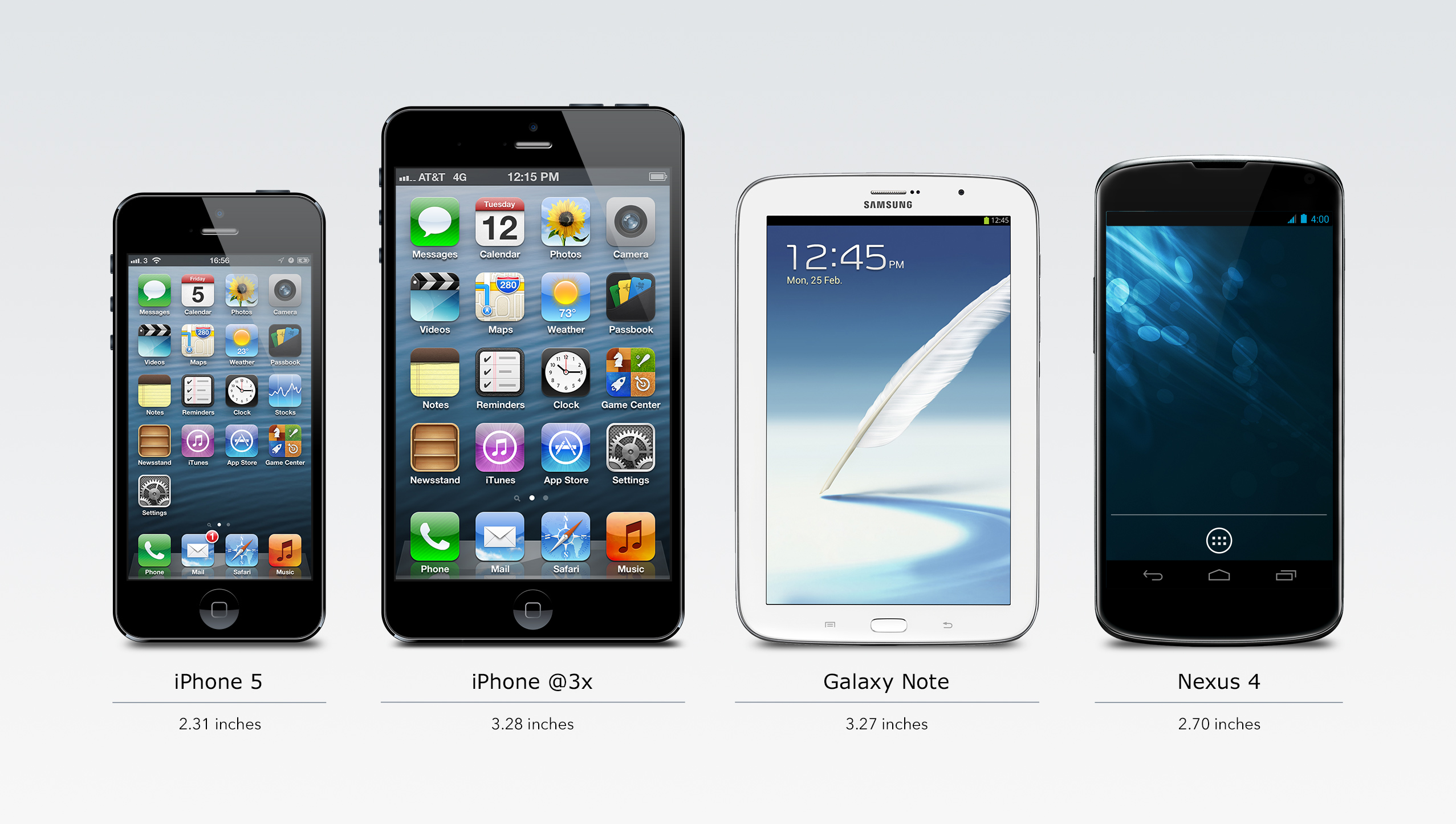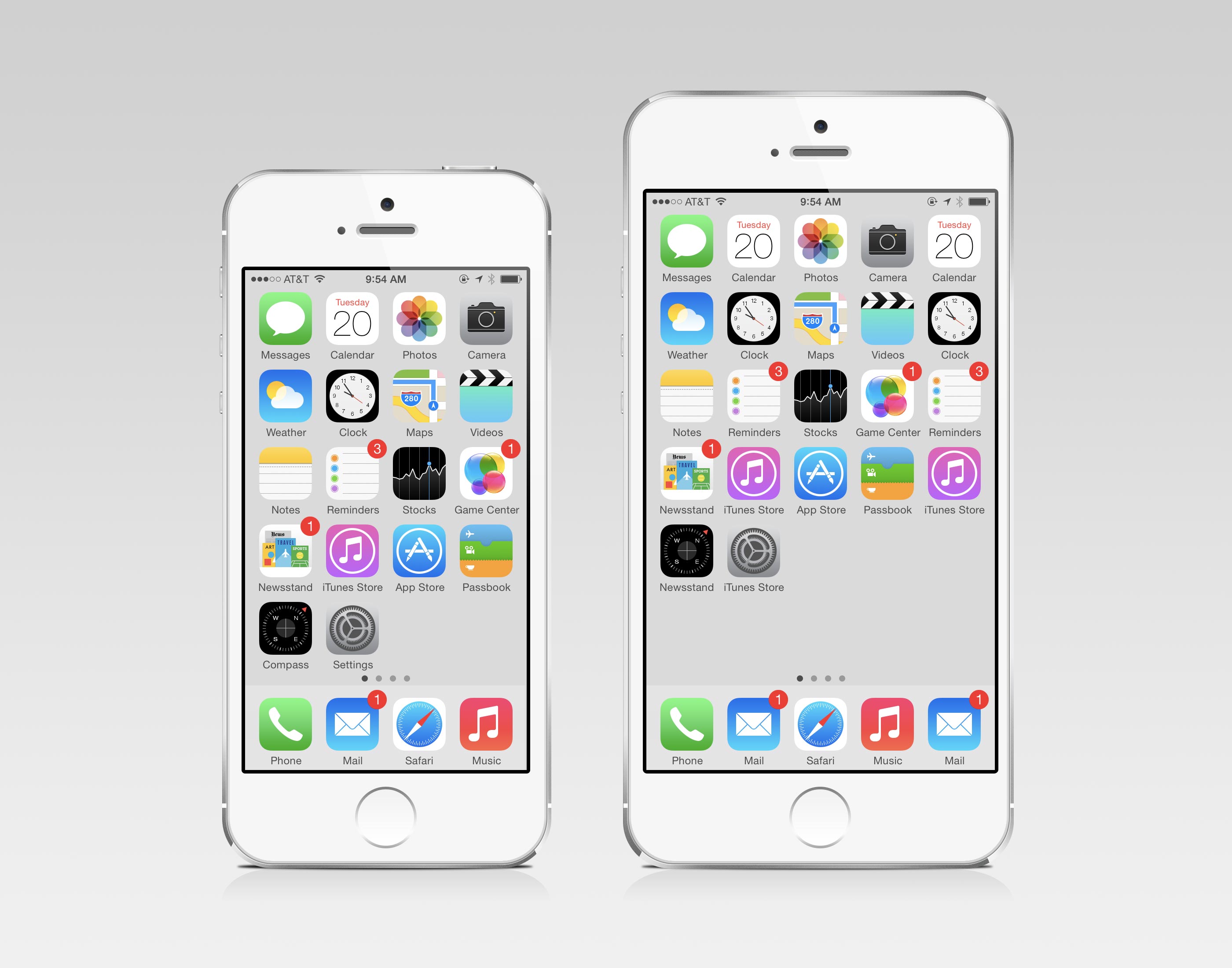My Reasonable iPhone 6 Prediction
Since a larger iPhone is all but a given at this point, the interesting question is how will Apple do it? There are several directions Apple could take. Before I delve into speculation, let’s rally around some terms.
Logical Size – The size of a display measured in points, not pixels. An iPad 2 and an iPad 4 have the same logical size (768x1024), even though they have different scales.
Resolution – The size of a display measured in actual pixels.
Scale – The multiplication factor applied (by software) to a display’s logical size. Up until now, Apple’s retina displays have used a scale factor of 2 – or “@2x” in common parlance. With the scale factored in, the iPad 4 has a scaled size of 1536x2048 compared to 768x1024 for the iPad 2.
Pixel Density – Independent of logical size or scale, pixel density is a measure of how many physical pixels occupy a given area of a display panel. The iPhone 5s and the iPad mini with Retina Display have the same pixel density, 326 pixels per inch (PPI). The mini’s display is logically and physically larger, but both displays are “cut” from the same materials.
Now for some fun speculation.
@3x Scale, Same Logical Size
Apple could increase the iPhone’s scale from @2x to @3x, re-using an existing logical size (either 320x480 or 320x568). This would allow them to use the same display panel already in use in the iPhone 5s, but cut it into a larger shape. This is more or less what Apple did with the first iPad mini; its display panel was the same as that of the iPhone 3G, just larger. The problem with this approach is that it would result in a phone that seems comically large for an Apple product:
This would look even more ridiculous if I’d mocked up a 320x568 point ratio at an @3x scale.
Historically, Apple’s designers opt for modest differences in the physical sizes of a given product range (for example, 13-, 15-, and 17-inch MacBooks Pro). So if Apple chose to bump the scale to @3x, I would expect them to also use a higher pixel density than 326 PPI. This would require a new LCD panel, which might be prohibitively challenging. From what I understand, shipping LCDs with a new pixel density would require significant engineering and infrastructure resources, as compared to merely cutting existing panels to a larger size.
@2x Scale, New Logical Size
Alternatively, Apple could re-use the current retina iPhone LCDs, but cut them to fit into a new logical size. I think a logical resolution of 396x656 would be an interesting choice. This would increase the home screen layout by one row and one column:
To my eyes, this looks like a more sensible size increase and a better use of the larger display. It also has the benefit of re-using the same 326 PPI display panel technology already being manufactured.
My Bet
For all these reasons, I think Apple is much more likely to ship an iPhone 6 with a new logical resolution at an @2x scale than an existing logical resolution at an @3x scale.

